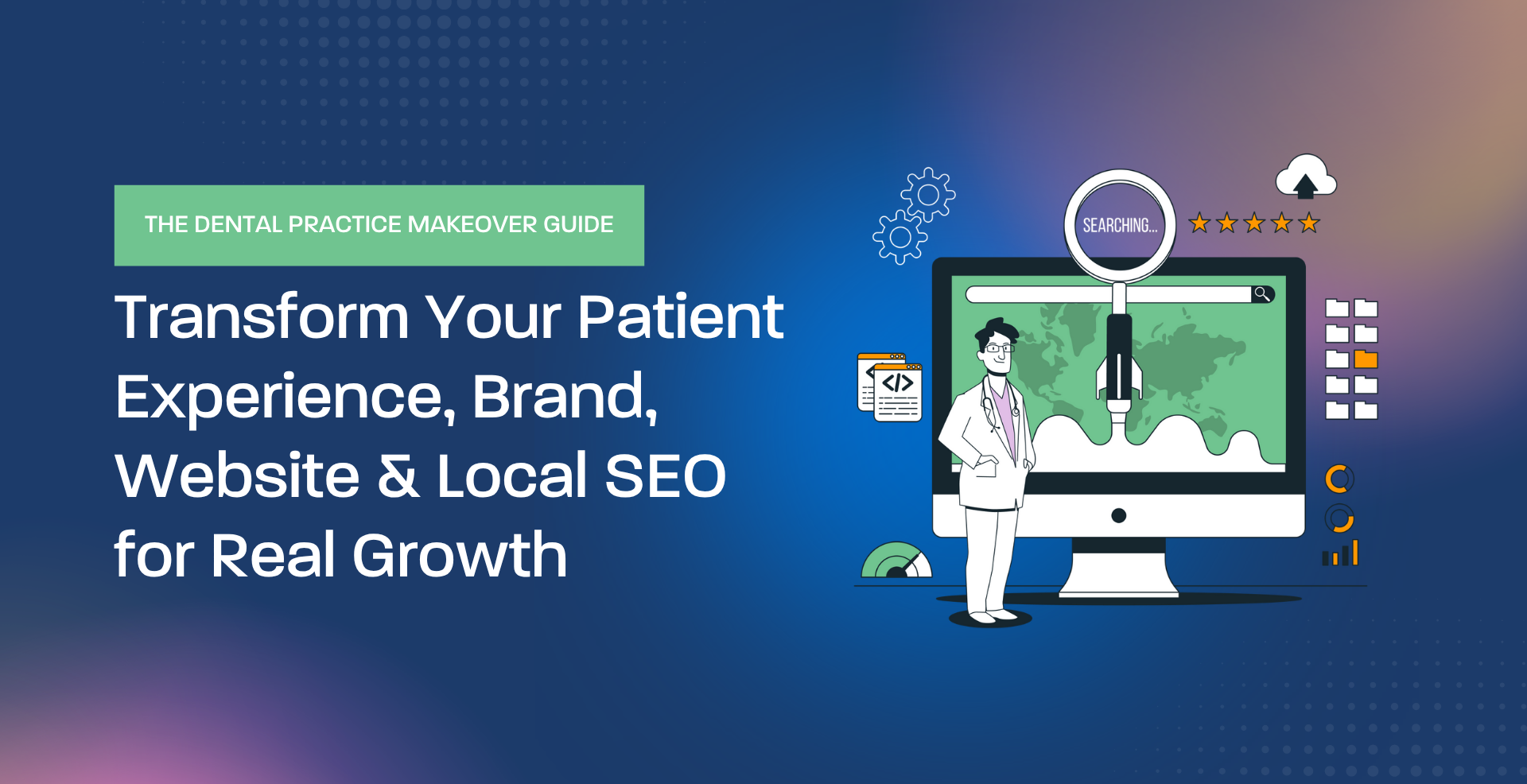Marketing has reached the age of segmentation and personalization, especially in this new year, 2024. As customers are more concerned with tailored, personalized buying experiences, it forces marketers and businesses to segment their audiences like never before with the help of customer personas.
Research has shown that 93% of companies exceeded their revenue goals by segmenting their database based on customer personas.
What does this mean? You need to know your customers before crafting marketing strategies and tactics in 2024. However, it’s not enough to simply have a general idea of who your audience is – to truly connect with them and understand what they expect from your brand, you need to have a deep understanding of their needs, wants, and preferences. That’s where customer personas come in.
What is a customer persona?
A customer persona refers to a detailed and fictional portrayal of your ideal customer. It analyzes the traits, behaviors, and motivations of individuals most likely to make purchases from your business. Establishing a persona usually begins with extensive research into your intended audience, gathering information such as their age, gender, location, interests, and buying habits. This data is then used to fabricate a comprehensive, fictitious representation that encapsulates the fundamental qualities of your preferred customer.
Why are customer personas important? Firstly, they guide you in making strategic decisions concerning product development, pricing strategies, and marketing approaches. With a clear understanding of the audience you aim to connect with and their interests, informed decisions can be made regarding resource allocation and prioritizing various business initiatives.
Ultimately, customer personas serve as important tools for any business aspiring to establish genuine connections with its audience and drive business growth. By investing the time to craft accurate and detailed personas, businesses can gain deeper insights into their customers, formulate more targeted and impactful marketing strategies, and ultimately foster stronger and more successful relationships with those who matter most to your business.

What does customer persona look like?
Let’s show a typical customer persona example/template that represents a client for an SEO agency so the agency can craft its services and communications to meet the needs and preferences of this target customer.
Persona Name: Sarah Maddison
Background
– Age: 32 – Gender: Female – Location: Salt Lake City, Utah
– Occupation: Marketing Manager at a mid-sized tech company
Characteristics
– Knowledge Level: Intermediate in SEO, understands basic concepts but seeks advanced strategies.
– Goals: Enhance the company’s online visibility, improve search engine rankings, increase organic traffic, and generate more qualified leads.
Pain points
– Lacks time for extensive SEO research and implementation due to other marketing responsibilities.
– Struggles with the technical aspects of SEO.
– Seeks tangible ROI and clear reporting on SEO efforts.
Interests
– Attends marketing webinars and seeks new industry insights.
– Active on LinkedIn and follows SEO influencers for advice and updates.
– Values case studies and success stories showcasing effective SEO strategies.
Preferred communication style
– Prefers concise and data-driven reports.
– Open to scheduled calls or virtual meetings for strategy discussions.
– Responsive to email updates and newsletters containing actionable SEO tips.
Needs & challenges
– Need for expertise: Seeks an SEO agency proficient in technical SEO and capable of providing advanced strategies.
– Time constraints: Requires an agency that can take over SEO tasks, allowing her to focus on broader marketing initiatives.
– Measurable results: Looking for an agency that demonstrates clear and measurable results through analytics and reports.
– Budget considerations: Needs cost-effective solutions aligned with the company’s budget constraints.
How the SEO agency can help:
– Comprehensive SEO strategy: Offer tailored SEO strategies encompassing technical optimization, content creation, and link-building strategies.
-Clear reporting: Provide regular reports showcasing performance metrics, ROI, and tangible outcomes.
– Educational resources: Offer webinars, whitepapers, or workshops to enhance her SEO knowledge.
– Consultative approach: Schedule regular strategy meetings to discuss progress, adapt strategies, and address concerns.
How can I conduct customer persona research?
In addition, here are some other things you should keep in mind before you build your persona.
- Understanding the problem: Each marketing endeavor aims to address a specific issue, just as every product strives to find a unique selling proposition within the challenges and deficiencies present in its industry. For instance, a skincare cream designed for sensitive skin aims to cater to individuals dealing with issues such as acne, imperfections, and damaged skin. Similarly, a sunscreen lotion is targeted towards individuals who spend significant time outdoors. Sanitary napkins address concerns related to leakage and discomfort. Recognizing these issues allows marketers to empathize with their audience’s pain points and develop a tailored customer persona accordingly.
- Decide involvement: Select a dedicated team to actively engage in the content strategy, incorporating frontline staff from the organization. These individuals are directly connected to the public and possess a better understanding of the preferences and dislikes of the target audience. This is where genuine and valuable data resides. Choose one individual to represent each essential department to streamline the different groups of personas efficiently.
- Marketing automation and CRM: Marketing automation systems offer persona-based segmented lists, while CRM platforms contain various customer persona fields, such as job title and industry, that can be utilized in your strategies.
- Pricing: An essential element in constructing a customer’s persona for marketing content involves considering the financial capability and disposable income of the targeted group. This information influences the pricing strategy for a product. Conversely, analyzing the pricing of a product helps identify the prospective buyers within the market segment.

How do I create my own customer persona?
Creating customer personas will make defining your website or app’s product requirements and subsequently designing it much easier. Why? Because it entails doing proper research into your main customer base segments. Creating customer personas often involves five simple steps:
What is the trait of the ideal customer?
Irrespective of the diverse spectrum of customer segments your business caters to, pinpoint the characteristics of your ‘optimal’ customer. Begin by assessing the intended audience for your product or service. Key attributes defining your ideal customer should encompass elements such as demographic details, interests, buying behaviors, challenges, and goals. This approach ultimately aids in expediting your lead assessment and sales process.
Gather real data
Even though customer personas are fictional people, they are built on data-driven insights. So the next question is: Where do you get the audience data to gain the insights you need to create your customer personas?
- Customer research—Popular among businesses with large customer bases, you can collect data through surveys, focus groups, interviews, and observation.
- Direct customer feedback—Soliciting feedback from customers about their experiences through online reviews, customer service interactions, and social media interactions.
- Government data sources—Accessing publicly available data from government agencies, such as the Census Bureau or Bureau of Labor Statistics helps to provide information about demographics, economic indicators, and market trends.
- Industry research—Collect data through market research reports, industry publications, and competitor analysis tools. Though this data can be costly, it offers insights that go beyond what businesses can gather from their audience.
- Social media—Track social media conversations, interactions, and trends on platforms like Facebook, Twitter, and Instagram as it will help you understand what people discuss about their industry and interests.
- Analytics software—Collecting and analyzing data from various sources, such as website traffic, social media engagement, and email campaigns. Analytics software can provide insights into consumer behavior, preferences, and interests. You can use tools like Google Analytics to understand user behaviors on your websites.
Since more data is better, you might need a combination of data sources to get insights that will help you build your personas.
Identify pain points and challenges
Identifying your customers’ sources of dissatisfaction and difficulties holds significant importance. It allows you to ascertain how well your goals align with fulfilling your customers’ requirements. After collecting relevant information, categorize customers facing similar challenges into segments. To ensure precision in your findings, consider the following inquiries:
- What specific problems do my customers aim to resolve through my product/service?
- What factors prompted them to seek out my product/service?
- What solutions would best address their concerns?
- What stands in the way of their goals and frustrates them?
- Have they ever tried to solve these pains before and, if so, how?
- If they managed to find a solution, did it work and would they do it again, or would they prefer a better solution?
Consulting your sales and customer success teams is recommended during this process. These individuals possess comprehensive insights into the issues and obstacles faced by potential clients more than anyone else.
Use storytelling to bring your customers to life
After collecting all the data, the next step involves crafting thorough customer personas. This involves categorizing attributes of your ideal customers into four primary groups:
- Demographic details
- Psychographic characteristics
- Buying patterns
- Challenges and driving factors
With this foundational information at hand, the next phase is to construct a compelling narrative for your persona. Drawing from your research, develop a detailed biography for your persona, incorporating vivid details.
Provide an engaging name for your persona and consider creating a visual representation, such as a picture, to portray them visually. This comprehensive approach aims to create a holistic and relatable persona that encapsulates various aspects of your target audience.
Continue to refine and define your personas
Developing customer personas should not be seen as a singular task. Much like your target audience, these personas need to evolve over time to stay relevant and effective. To keep pace with emerging market trends, consistently engage in market research while actively seeking customer feedback. By consistently refining and updating your personas, you’ll ensure that your marketing strategies stay optimized, ensuring ongoing effectiveness and relevance for sustained success.

Is customer persona a quantitative or qualitative approach?
Many individuals contemplate the research approach necessary for crafting a customer persona. Should the method lean towards quantitative or qualitative measures? Generally, the most effective customer personas are derived from a blend of both methodologies. Why opt for one approach over the other when they can complement each other?
Utilizing quantitative data contributes to a more comprehensive understanding of your customer personas, whereas qualitative data adds credibility and aids in establishing a personal connection for your team.
Quantitative analysis involves gathering extensive data regarding your potential customer base segment. This encompasses acquiring factual insights into their daily routines, including their residential locations, industry affiliations, and frequency of utilizing apps similar to yours.
3 ways customer personas help your marketing efforts
Before creating your desired personas, it’s crucial to consider the intended utilization. Whether you’re crafting them individually or collaborating with a group of stakeholders, outline the specific insights you aim to gather and their intended applications. Personas serve as effective tools for directing various tasks, including:
Crafting targeted messages
This stands as one of the primary motives driving marketers to create personas initially – enabling them to tailor their communication for potential customers! The process of persona development proves beneficial in shaping essential messages and outlining the unique value proposition tailored to every customer segment. Understanding the aspirations, obstacles, queries, and concerns of your audience facilitates direct addressing of these requisites within your written messages.
Directing content strategy and creation
Understanding the desires and needs of your audience significantly simplifies the process of crafting purposeful content that resonates with them. Formulating personas aids marketers in pinpointing crucial queries, shedding light on how the preferred audience conducts research, and indicating their content consumption preferences. These factors collectively indicate the subjects that need addressing in your content and the appropriate formats for its presentation.
Once personas are established, delineating content objectives and monitoring content progress for each persona becomes more straightforward. To prevent overwhelming yourself, it’s advisable to concentrate on one to two personas at a time by generating the necessary content sought by these specific audiences. This might encompass a live content series, blog posts, and/or social media promotion. After successfully launching and implementing this content, the focus can then shift to the subsequent set of personas. Gradually, this approach ensures the development of content tailored for all targeted personas within your audience.
Segmentation
Defining segmentation involves the core concept of persona profiles, consolidating the prevalent behaviors, demographics, and psychographics of your ideal audience into a vivid representation of your customer base. When crafting these personas, the focus is on pinpointing the distinguishing factor that sets each persona apart. This could relate to their reason for engaging with your business, the driving force behind their actions, or even their authority in decision-making processes.
Once these personas are clearly defined, they serve as a foundation for devising a segmentation strategy. This involves gathering data from inbound leads that offer insights into their persona. In more advanced scenarios, it involves inferring a lead’s persona based on their consumed content and activities. Subsequently, tailored email campaigns and nurturing strategies are developed in alignment with these personas. When your segmentation strategy resonates with your personas, the creation of messaging and content becomes notably simpler and more impactful.
Personas extend beyond a mere checklist item, moving past the notion of merely acknowledging our ideal customer. They serve as a valuable resource across all facets of your marketing strategy. Crafting personas constitutes a vital commitment toward truly grasping the essence of your customer base. Moreover, it’s an ongoing process that should adapt alongside the growth of your business and the changing dynamics of your customer base.






